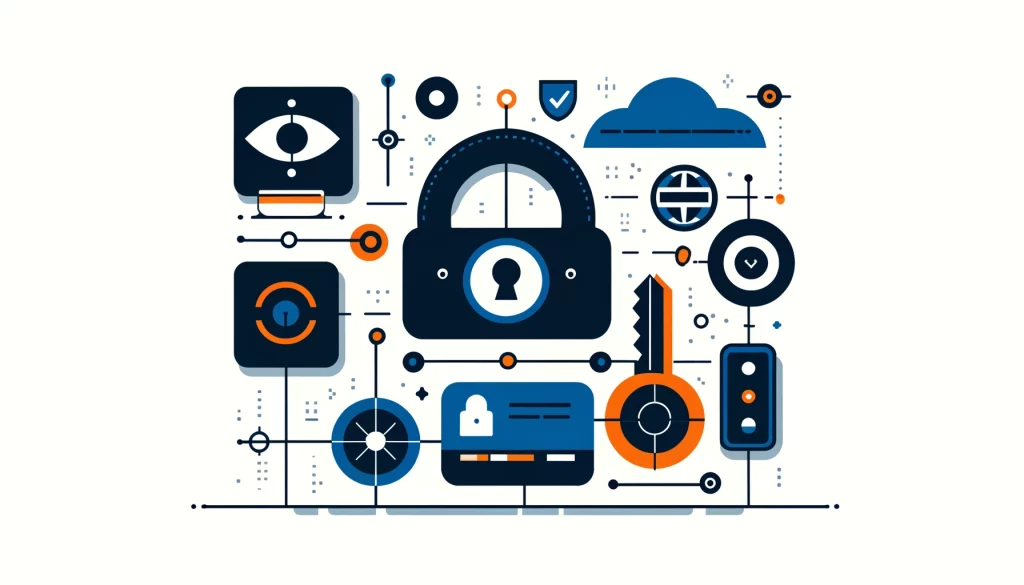
Data Access Governance

Without proper data access governance, organizations risk compromising data security, violating compliance regulations, and losing the trust of their customers and stakeholders.
What is Data Access Governance?
Data access governance refers to the policies, procedures, and practices that control access to data assets. It involves defining who can access what data, when, and under what conditions.
Data access governance is important for managing a company’s data assets.
Effective data access governance ensures that authorized individuals access data and use it for legitimate business purposes.
This tool helps prevent data breaches and protect sensitive information. It also ensures compliance with regulations such as GDPR, HIPAA, and PCI DSS.
The Importance of Data Access Governance
Without proper data access governance, organizations face a range of risks and challenges. These include:
Data Inconsistencies
When data access is not well-governed, inconsistencies can arise across different systems and departments. For example, different systems may list user names differently, causing confusion and errors.
These can hinder data integration efforts and impact the accuracy of business intelligence, reporting, and analytics.
Data Inaccuracies
Without proper data access controls, data inaccuracies can go unnoticed and uncorrected.
This can lead to poor decision-making, missed opportunities, and even financial losses. For example, if sales data is inaccurate, an organization may make incorrect assumptions about customer demand and overproduce or underproduce products.
Security Breaches
Inadequate data access governance can leave an organization vulnerable to security breaches.
Unauthorized access to important information can lead to theft, alteration, or sharing of the data. This can damage the organization’s reputation and financial standing.
Data breaches can lead to legal and financial penalties, especially if the organization is not following regulations.
Implementing Effective Data Access Governance
Organizations need to focus on three key areas for effective data access governance. These areas include keeping an audit trail, ensuring compliance, and monitoring data access.
Keeping an Audit Trail
An audit trail is a complete log of every action or activity linked to a piece of data. It includes everything that happens to a piece of information, from creation to manipulation to deletion. In the past, tracking audit trails meant manually using paper records.
However, with the advent of digital technologies, audit trails can now be tracked automatically using specialized software platforms.
Keeping an audit trail is critical for data security and compliance. It allows organizations to track who accessed what data, when, and for what purpose.
You can use this information to detect and investigate security breaches, identify unauthorized access attempts, and ensure compliance with relevant regulations.
Ensuring Compliance
Most organizations are subject to a range of regulations that govern how they collect, store, and use data. The rules may vary depending on the type of business, the information collected, and the company’s location.
Different rules apply to different types of businesses. The rules also depend on the gathered information. Additionally, the location of the company can impact the rules that need to be followed.
Some common regulations include GDPR, HIPAA, and PCI DSS.
To ensure compliance with these regulations, organizations must implement appropriate data access controls and maintain accurate audit trails.
They must also ensure that data is stored securely and protected against unauthorized access, modification, or deletion.
Failure to comply with relevant regulations can result in significant legal and financial penalties. It can also damage an organization’s reputation and erode customer trust.
Monitoring Data Access
Monitoring data access is a critical component of effective data access governance. It involves tracking who is accessing what data, when, and for what purpose.
You can use this information to detect and investigate security breaches, identify unauthorized access attempts, and ensure compliance with relevant regulations.
Two main approaches to monitoring data access exist: sequential access and random access. Sequential access involves moving data around on a disk in search of the requested data.
This approach can be resource-intensive, as data must be read one segment at a time until the desired data is located.
Random access, on the other hand, allows data to be stored or retrieved from any location on a hard drive.
This method is faster than reading data one by one because it doesn’t have to search through the entire dataset. It can find the specific data more quickly.
The Special Importance of Logging and Monitoring Access to Sensitive Data
While all data should be subject to appropriate access controls and monitoring, sensitive data requires special attention.
Sensitive data is information like user lists, passwords, system details, customer names, trade secrets, medical records, and financial data.
Defining what constitutes sensitive data is the first step in implementing effective data access governance for sensitive information.
Organizations need a policy for sensitive data. This policy should have specific examples of what counts as sensitive data. It should also allow for the collection of more data in the future.
This approach assumes that a lot of the information employees receive is confidential. It also promotes critical thinking when they encounter new or unclear data.
Once sensitive data has been defined, organizations must establish rules for how it is stored and accessed.
This means organizing information based on importance and controlling access for different staff members. The arrangement of information is sensible to ensure it is easily accessible. Access to the information is under restriction based on the staff member’s role or level of authorization.
It also involves implementing appropriate security and risk management solutions to protect sensitive data from unauthorized access, modification, or deletion.
The Benefits of Effective Data Access Governance
Implementing effective data access governance can provide a range of benefits for organizations, including:
Improved Data Security
Organizations can reduce the risk of data breaches and unauthorized access by controlling who can access data. They can also control when data can be accessed. Additionally, they can set conditions for accessing data.
This helps to protect sensitive information, maintain customer trust, and avoid legal and financial penalties.
Enhanced Compliance
Effective data access governance helps organizations to ensure compliance with relevant regulations such as GDPR, HIPAA, and PCI DSS.
By maintaining accurate audit trails and implementing appropriate access controls, organizations can demonstrate compliance and avoid costly fines and penalties.
Increased Data Accuracy
Organizations can improve their data by only allowing authorized individuals to access and use it for legitimate business purposes. This ensures accuracy and consistency. Unauthorized access can lead to errors and inconsistencies in the data. By restricting access, organizations can maintain the quality and reliability of their data.
This can lead to better decision-making, improved operational efficiency, and increased customer satisfaction.
Reduced Data Silos
Data access governance can help to reduce the number of data silos within an organization.
Collaboration among organizations is key to enhancing data integration and analysis. By aligning data management practices and ensuring consistency across all business units, organizations can achieve better results.
This involves breaking down silos within the organization. This collaborative approach helps to ensure that data is integrated and analyzed effectively. It also promotes a more cohesive and efficient workflow.
Conclusion
Data access governance is a critical component of overall data governance and is essential for ensuring data security, compliance, and accuracy.
Organizations can reduce the risk of data breaches by establishing access rules and guidelines. This helps in safeguarding important information and ensuring compliance with regulations.
Effective data access governance involves keeping accurate audit trails, ensuring compliance with relevant regulations, and monitoring data access using sequential or random access approaches.
It also involves defining what constitutes sensitive data and implementing appropriate security and risk management solutions to protect this information.
By investing in effective data access governance, organizations can improve data security, enhance compliance, increase data accuracy, and reduce data silos.
This can lead to better decision-making, improved efficiency, and increased customer trust and satisfaction.
Organizations that prioritize data access governance and implement appropriate policies, procedures, and practices will be well-positioned to succeed.
